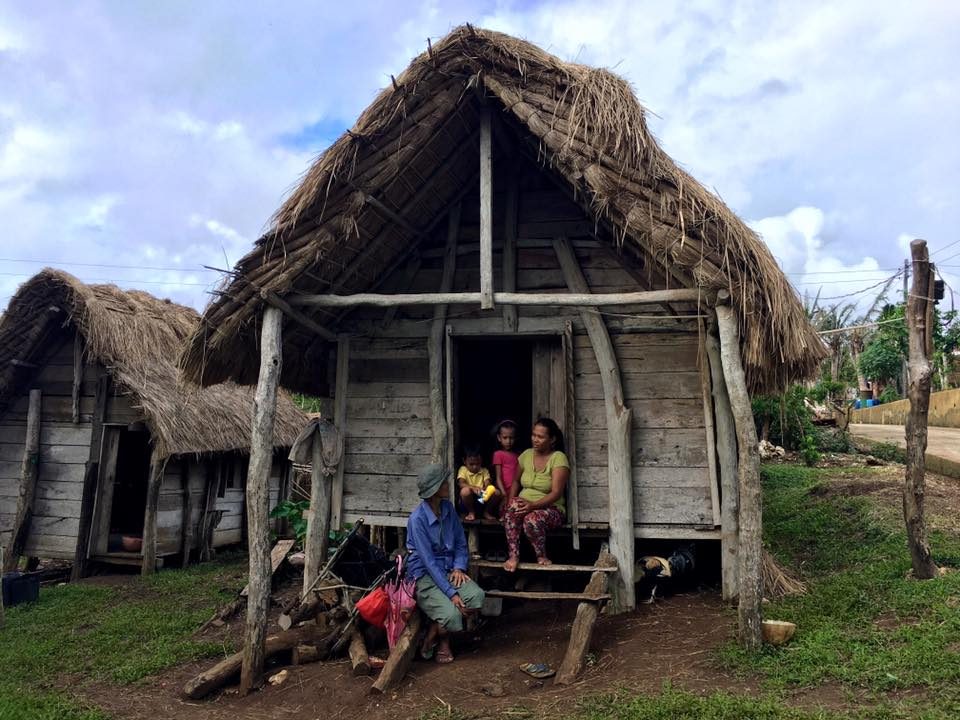SUMMARY
This is AI generated summarization, which may have errors. For context, always refer to the full article.

ITBAYAT, Batanes – Batanes has endured centuries of strong typhoons as it lies along the typhoon belt in the Pacific but the intensity of super typhoon Ferdie (international name: Meranti), which hit the picturesque island province in September 2016, caught communities there off-guard.
“Dito sa Batanes, sanay na kami sa bagyo. Bahagi na ito ng buhay namin, kaya ang paghahanda sa bagyo ay isang mahalagang bahagi din ng kultura namin,” said Faustina Cano, an Indigenous Ivatan leader.
“Pero kahit sanay na kami, nakikita ko na palakas nang palakas ang mga bagyong dumadaan sa amin. Hindi na namin ma-predict ang panahon ngayon, at kahit kami nagulat sa lakas ng typhoon Ferdie – never ko naranasan sa buong buhay ko ang ganun kalakas na bagyo,” she said.
(Here in Batanes, we are used to typhoons. It is part of our life, and so preparing for storms is also an important part of our culture. But even if we’re used to typhoons, even I have noticed how much stronger they’ve been getting. We can no longer predict the weather these days, and even we were shocked by typhoon Ferdie’s strength – I have never in my entire life experienced a storm that strong.)
For Nanang Tinang, as she is fondly called in the community, this is climate change.
Beyond the postcard-perfect cliffs and rolling hills that have made it a popular tourist destination, Batanes is also known for traditional Ivatan stone houses that are designed to resist strong winds and rains – living testaments of indigenous knowledge on adapting to harsh weather conditions. (READ: Beyond the postcards: Batanes and climate change)
Although most local residents have since constructed modern concrete houses, many of the poorest communities, such as Barangay Yawran in Itbayat, still use huts made out of wood and cogon, making them vulnerable to strong typhoons.
Ferdie damaged Php835-million (US$16.6-million) worth of houses and infrastructure, and agricultural crops such as garlic, the main source of livelihood for most farming families in Batanes. (READ: Time to implement DRR and adaptation plan on agriculture)
Batanes recorded zero casualties from Ferdie, thanks to centuries of building resilience to climate change and continuous preparations, but the effects of the typhoon highlight the need to proactively deal with small-scale and medium-scale emergencies, and prioritize funding for climate change adaptation initiatives. (READ: Duterte signs Paris climate deal)
In this virtual reality video, Nanang Tinang takes us on a tour of Batanes and tells us how climate change is affecting communities.
The video was produced by Rappler in partnership with Oxfam in the Philippines.
To view the video using virtual reality goggles, open this video on your mobile phone and click on the goggle icon at the bottom right corner. – Rappler.com
YOU can help raise the voice of people in Itbayat, Batanes and other climate-vulnerable areas by urging the Philippine government to uphold and implement the Paris Agreement on Climate Change, and prioritize funding for climate change adaptation initiatives.
Sign the petition: https://act.oxfam.org/asia/philippines-ratify
*US$1=Php50.29
Add a comment
How does this make you feel?
There are no comments yet. Add your comment to start the conversation.